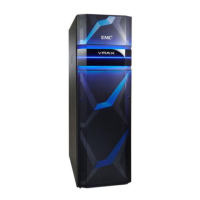19
PERFORM A HOST RESCAN
After the create operation completes the systems administrator must issue a host rescan to allow the host to discover the paths to the
newly created devices. This host rescan is OS specific and also should include a rescan using the host multipathing software if it must
be performed separately from the host rescan, as with PowerPath.
Devices go into a CutoverReady state from a Created state after the host rescan is performed and the target devices are discoverable.
After this is complete, I/O issued by the application will be directed to either the source or the target arrays through the host
multipathing software. This is possible because the target devices are in pass-through mode. See Appendix A for more details on host
multipathing software settings.
CUTOVERREADY AND PASSTHROUGH MODE
Passthrough mode allows the host to write to or read from either the source or target array. Any write that in sent to the target array will
be sent across the SRDF link and serviced by the source array. No data will be kept on the target array while in a CutoverReady state.
The CutoverReady state is a transitional state. The devices should only be in a CutoverReady state and using pass-through mode for
as long as it takes to check that the Create has succeeded properly, to run the host rescan, and to run the Cutover operation.
Figure 5. Cutover Ready and Passthrough Mode
PowerPath shows all paths to the source and target devices as alive. HYPERMAX OS will ensure that all I/Os that are directed to the
target by the host are actually serviced by the source array until the cutover.
The paths will all remain in an alive state until after the commit operation.
Note: A Host rescan that will result in the permanent removal of the now “inactive” paths should not be undertaken at this
point, this will limit the ability for the migration to be seamlessly cancelled and normal operation reverted back to the source
array.

